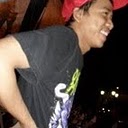Ratu Boko Temple is a building that was supposed historians have multi-function that consists of several components, namely the fortress palace (palace) and the cave. Location of Keraton Ratu Boko from Yogyakarta can be reached via the motorway Yogyakarta-Solo, approximately at km 17 or T-junction turn right as far as Prambanan + 3 km.
The main building Site Ratu Boko is the ancient relics found in the first time by Dutch archaeologist, HJ De Graaf in the 17th century. Realization of the building as the main gate, temple, the pool of 20 meters x 50 meters with a depth of two meters, caves, fences and the square, temple burnings, and paseban. Petilasan marquee buildings, halls, three small temples, ponds, and the princess found in the southeast. While Wadon cave, cave Lana, and several other caves, and ponds and statues of Buddha in the east.
HJ De Graaf notes based on news from European travelers who are traveling, on the south side of Prambanan Temple archaeological site there. As the story developed in the local community, the site is connected with King Boko from Bali.
1790 Van Boeckholtz find archaeological ruins on a hilltop site Ratu Boko. The discovery was immediately published. Apparently, that attract scientists Makenzic, Junghun, and Brumun. In 1814 they made a visit and recording. One hundred years later, FDK Bosch conduct research, and his research entitled van Ratoe Kraton Boko.
From the site itself is found the oldest evidence of 792 AD in the form of Inscription Abhayagiriwihara. The inscription mentions a character named Tejahpurnpane Panamkorono. It is estimated that, he was the Rakai Panangkaran mentioned in the inscription Kalasan year 779 AD, 907 AD Mantyasih inscriptions, and the Middle Wanua Inscription III in 908 AD. Panangkaran Rakai was the one who built the temple of Borobudur, Temple Sewu, and Kalasan. Nevertheless Site Ratu Boko is still shrouded in mystery. Not yet known when built, by whom, for what, and so forth. People just expect that a palace building.
According to Prof. Magister, an expert on the history, building Boko Palace is a bastion of Balaputradewa or Kayuwangi Rakai, Rakai Pikatan youngest son. Allegedly attacked by Rakai Rakai Kayuwangi Walaing Puhuyaboni, great-grandson Sanjay who feel more entitled to the throne than Pikatan Rakai, Rakai Pikatan merely because the husband of Pramodharwani, princess crown Samarottungga Buddhist. In Rakai tersbut battle Walaing successfully repelled and forced to flee over the hills Ratu Boko and make defenses there. But in the end Kraton Boko can be attacked and occupied Rakai Kayuwangi who intentionally damage the inscription which contains genealogical Walaing Rakai, by eliminating the part that contains the names of father, grandfather and great-Rakai Walaing.
Ratu Boko Site Restoration began in the Dutch colonial era in 1938. The effort was then resumed the government of Indonesia since 1952.
Langganan:
Posting Komentar (Atom)




Tidak ada komentar:
Posting Komentar